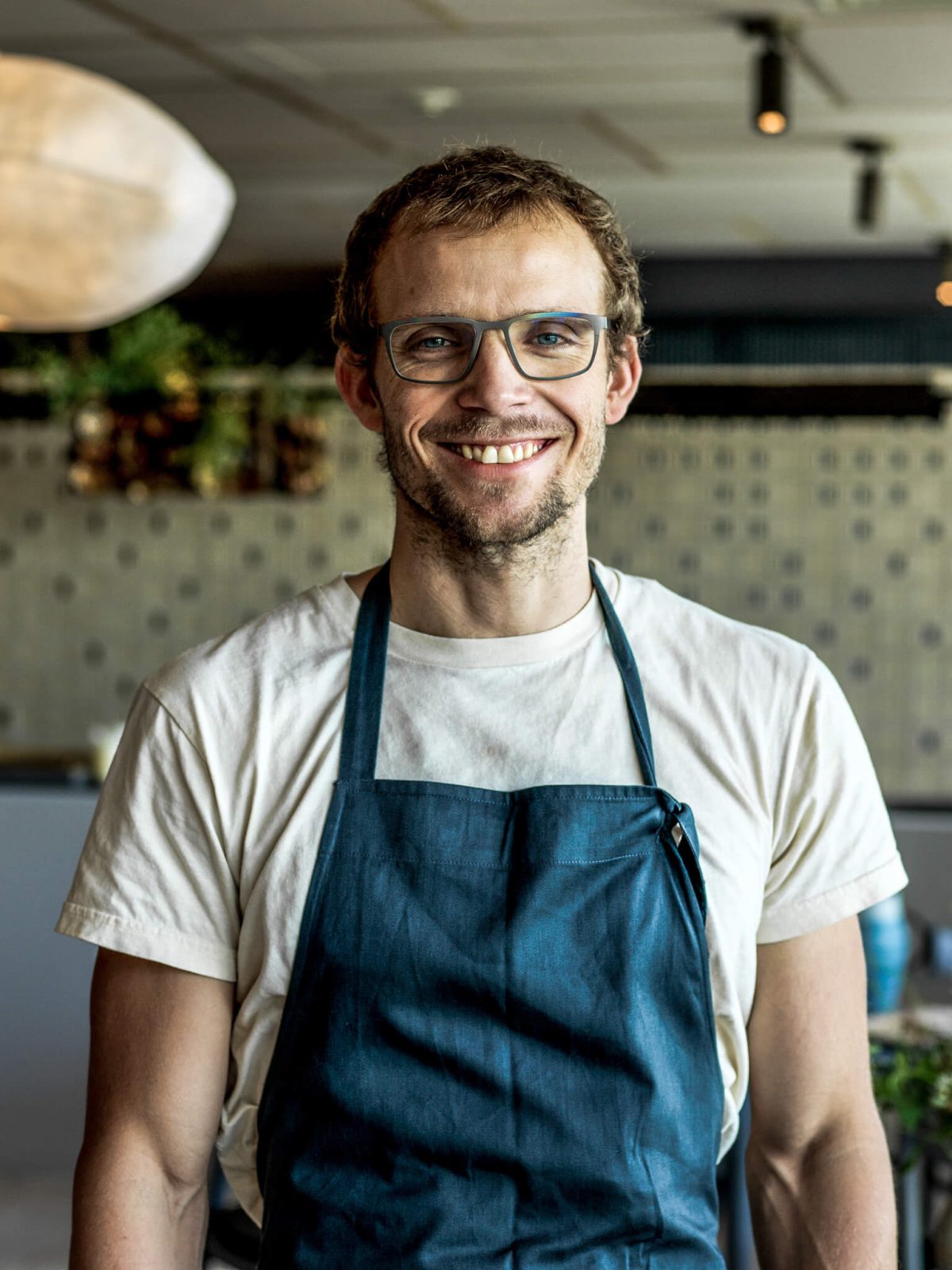
Image: Ilona Marx | Inua
That a restaurant in the spirit of two-star Noma has arisenover 5,500 miles to the east of the original is thanks to chance, a strong financial backer and most of all, Germany’s own Thomas Frebel. In 2018, the 36-year-old native of Magdeburg set off to seek his fortune in Japan on behalf of Redzepi. He found it on the ninth floor of an office building in a residential area of Tokyo, surrounded by a young international team made up of 32 people. Just after opening, Inua, like Noma, was awarded two stars. KTCHNrebel met the charismatic chef at his place in Tokyo and talked to him about how he introduces experimental dishes to the tradition-loving Japanese, how his East-meets-west approach can be achieved with regional resources, about recruiting while facing obstacles and his formula for facing the Corona pandemic.
Thomas, you are the person René Redzepi picked to open a restaurant here in Tokyo. How did this happen?
Well, I worked at Noma from August 2010 to November 2011, and then I set off for a year and a half to travel around South East Asia and South America. In 2012, I came back to Copenhagen at René’s request so that I could start working in research and development. By chance I overheard one day that Tsuguhiko Kadokawa, the second largest Japanese publisher who produced the documentaries about Noma and translated and published the Noma book, was talking with René and his partner Peter Kreiner about opening a Noma branch in Japan. Although René and Peter had just organized a five-week pop-up restaurant in Japan in 2015, coming up with a permanent solution was proving difficult. But then I came up with the bright idea that I could go to Japan and open my own place with Kadokawa’s help.

Image: Inua
The Inua is located on the ninth floor of a ten-story office building in a mixed business and residential neighborhood. Why did you choose this location?
We are very close to Kadokawa headquarters and until recently, 2000 of its employees worked in the area. I think Chiyoda, which is the name of the district, is actually an ideal location. There’s a good mix here. There are playgrounds and tennis courts and it has a really down to Earth atmosphere overall. We work with natural light, have three kitchens and a roof terrace where we practice yoga once a week. I either walk or bike to work. This is not the kind of lifestyle you could have in Shibuya or Ginza. One of our avowed goals from the very beginning was to become part of this lively neighborhood. You were awarded two Michelin stars in 2019. That was really a big surprise. None of us were expecting that to happen, and is also wasn’t really a priority we had set for ourselves. It’s especially strange when you think about what we’re doing here and how we’re doing it.
Can you explain your philosophy?
We’re here because we love this country, its food and its culture. Kaiseki, Japanese haute cuisine, combines both regional and seasonal food and brings them onto the plate with various textures, tastes and temperatures. You could say that Kaiseki is the distillation of time and region. What Noma does in Copenhagen is a modern Scandinavian interpretation of Kaiseki. At Inua, we present Kaiseki through an international filter. I say international filter because we work with a young, very international team that brings many fresh ideas to the menu.
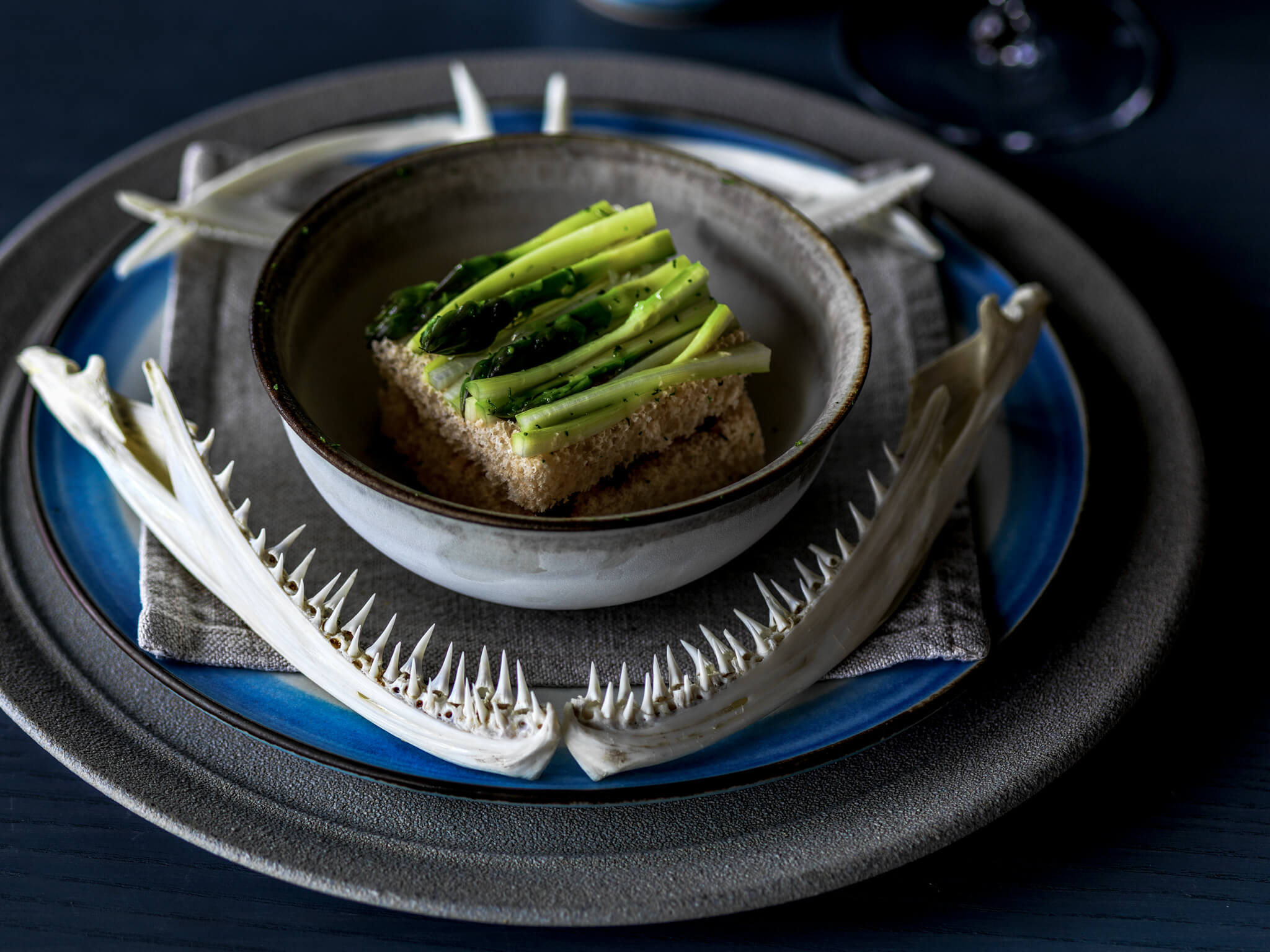
Image: Inua
Which products do you prefer?
I am a big fan of Sansai, Japanese mountain vegetables, which are harvested from mid-March to June. This is the only place I have ever encountered vegetables with this kind of form and flavor.
Like at Noma, you are very experimental. Do you have an example of a signature dish that highlights your approach?
My philosophy is complex simplicity. A good example of this is our smoked maitake. This is a half-wild mushroom that is first dried for five days. After that, it is vacuumed with koji oil. This is done by pressing the koji oil into the mushroom. We make it ourselves, using koji spores that grow on polished rice. Once we have prepared the mushrooms this way, they are smoked on cherry wood for three days, then cooked in a dashi broth made of miso and dried pine needles. This dish really takes a long time to prepare. You have to plan ten days for the rice koji alone, and the miso needs to ferment for eight weeks. We only harvest the pine needles two months of the year, but then we have over 1000 pounds that have to be dried. As you can see, everything involves a lot of time and effort. But by six in the evening, when the guests begin to arrive, this dish is very easy to prepare. At this point the mushroom is simply doused with dashi and is ready to be served.
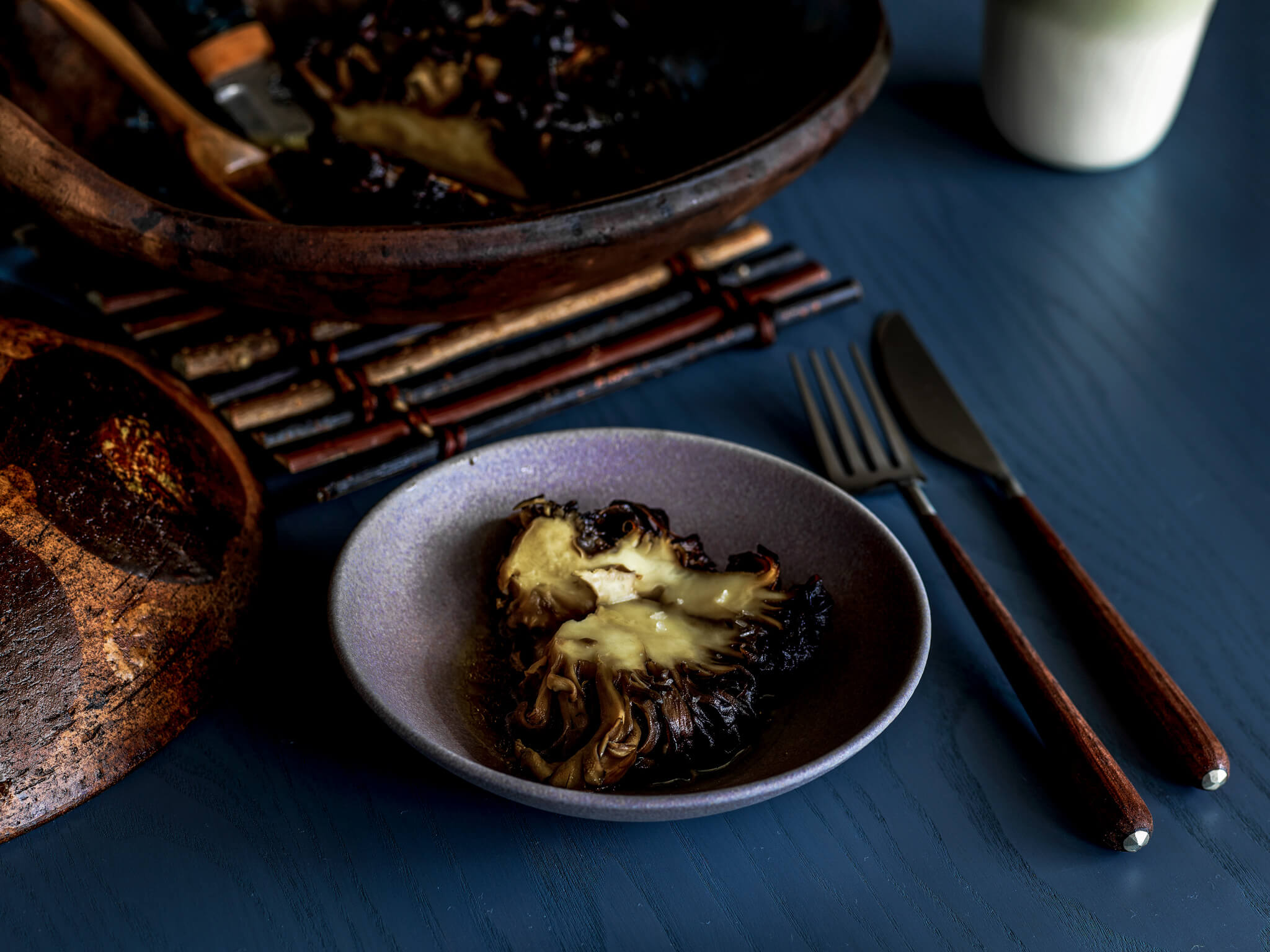
Image: Inua
Your kitchen lives for experiments. Are you able to find enough suppliers for your fancy ingredients?
Our menus work mainly because we make many things ourselves. In a country with such a long and rich tradition it is not easy to find someone who is willing to throw the ways of their forefathers overboard. That’s why we develop many things ourselves, such as our own misos, kombuchas and kojis.
How is this received in Japan?
To put it simply, we have three types of guests. First, we have our regular guests who like what we do and come every couple of months. Then we have guests who aren’t sure they’ll like what we do. People in Japan don’t travel as much as they do in Europe, and particularly those with a strong sense of tradition sometimes regard our approach with skepticism. However, they’re curious and come back. And then there are the guests who don’t like what we’re doing at all. “That’s not how we do things in Japan,” they say. Luckily, this group is the smallest of the three.
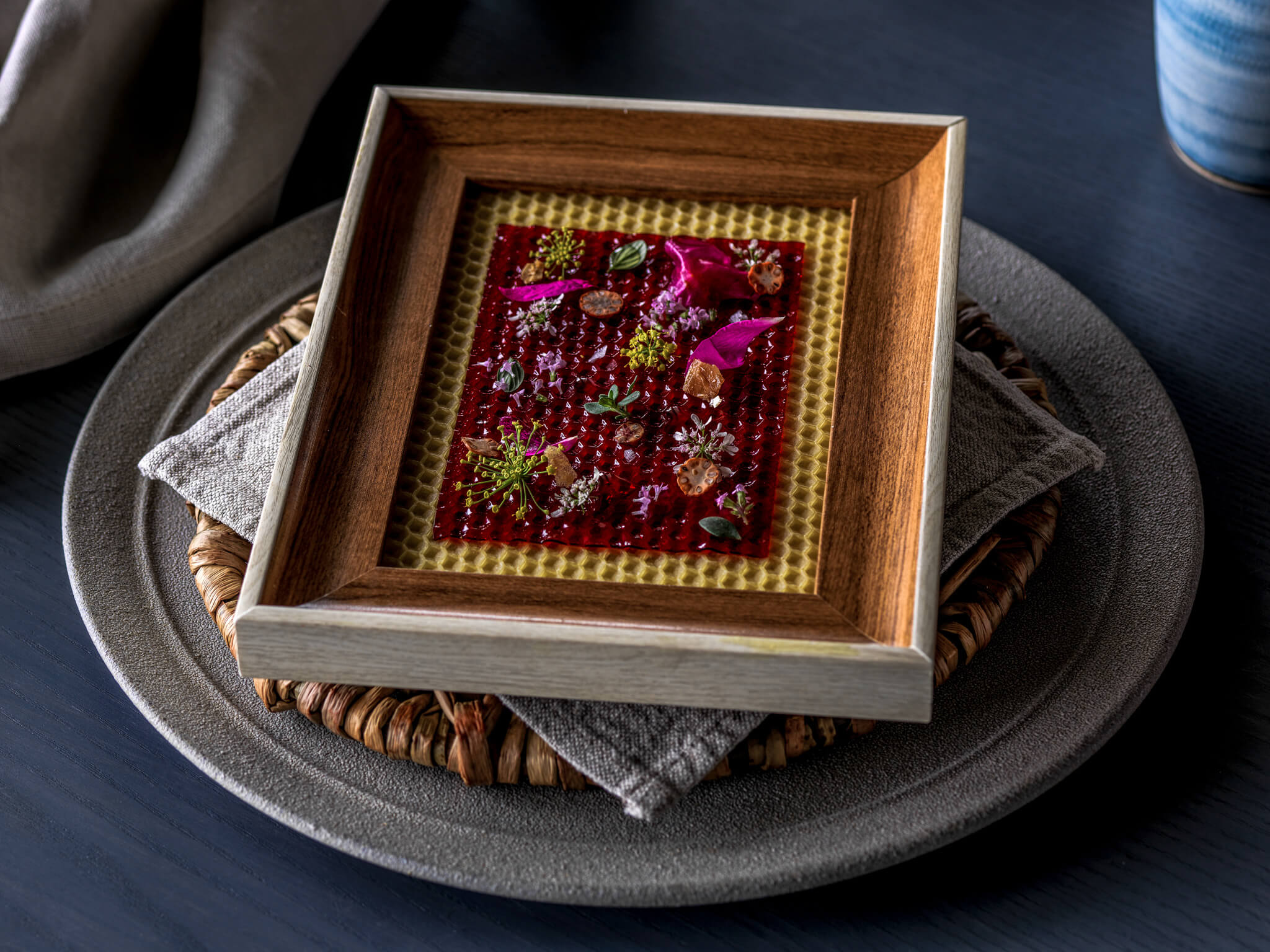
Image: Inua
You already mentioned your young team.
Yeah, we really are a very young, international team. The average age is 26. I’m 36, which means I’m by far the oldest person around. My employees come from over a dozen different countries. I really have a lot of great people helping me out. For example, there’s our beverage and restaurant manager from Australia, Nikola Calvert, then my right hand man, José Carlos Conde, who’s from Guatemala. I already worked with him at Noma. The same is true for Toni Toivanen from Finland, who had already worked with the Australian Shui Ishizaki at the test kitchen. We are also happy to have Hiro Nakamichi from Japan, who manages the research and purchasing department.
Getting a Japanese work permit is not easy. How do you do your recruiting?
From the outset, recruiting was done through the network we had from our Noma days. Finding employees is not really the problem, but it is difficult to get a visa. The conditions of stay are different for each country. For employees from Italy and the USA, for example, it is really complicated; they can basically only come here as interns. Nevertheless, having an international team is particularly important to me. Currently, the ratio is 50 percent Japanese employees and 50 percent employees from other countries. I would find a ratio of 40 to 60 ideal.
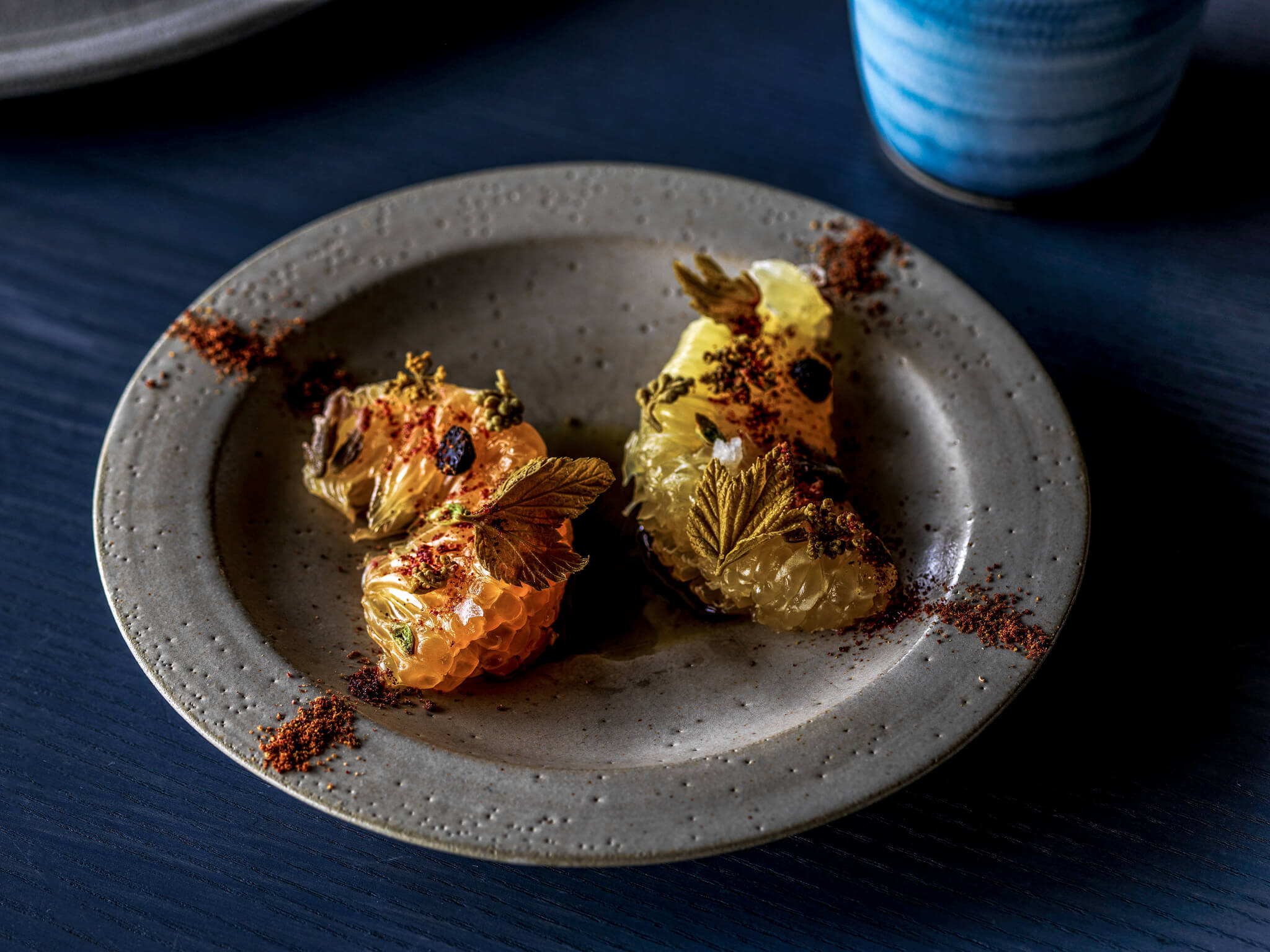
Image: Inua
What have things been like for you since Corona?
Kadokawa is like a big brother to us, who really tries everything to keep his employees. This is a stroke of luck and a set-up that has provided us with stability so far. As a result, all salaries are guaranteed until the end of June. We have developed various scenarios for the rest of the year, which we will present to the executive board next week. Before Corona, up to 50 percent of our guests were tourists, so now we have to make some provisional adjustments. The proposals range from an a-la-carte concept to a temporary downsizing.
How do you face the crisis as a team?
From the first week we established a new routine. We meet up every day for four hours. Each time four employees have prepared a presentation and then talk about a specific topic. These talks are about subjects like nuclear power, the spice trade, the Silk Road or the history of cooking. This is inspiring, provides people with a task and strengthens morale. The most important thing is that we stick together as a team. I’m very happy that it’s been working so well. The contrast has been really dramatic. Only two months ago we still had meetings where we discussed hiring 50 new employees. The Olympic Games were supposed to take place in Tokyo this summer, and we were already fully booked with over 200 guests per day. Now we’re fighting for every job.
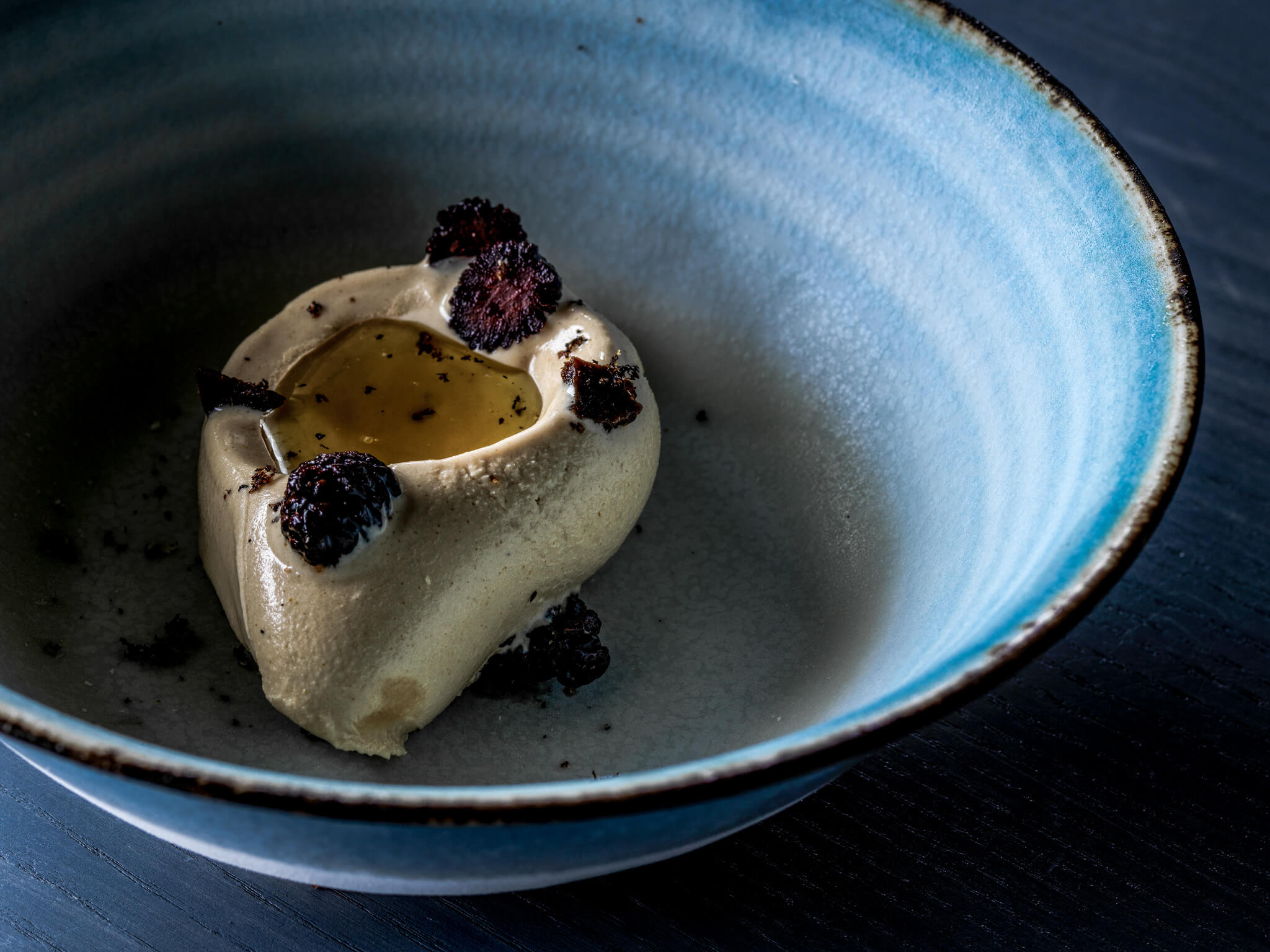
Image: Inua
Do you see anything positive coming out of this predicament?
Yeah, I believe and hope that in the future we will appreciate food more and acknowledge how important it is to eat healthy and have a healthy lifestyle. Both help us protect our bodies against diseases.
What do you do to relax?
Sometimes I need time for myself, to escape the urban jungle and immerse myself in nature. Except during a lockdown, this is luckily very easy to do in Japan.
We need your help. Tell us your opinion about our magazine. It only takes 1-2 minutes https://eu.research.net/r/2020-KTCHNrebel


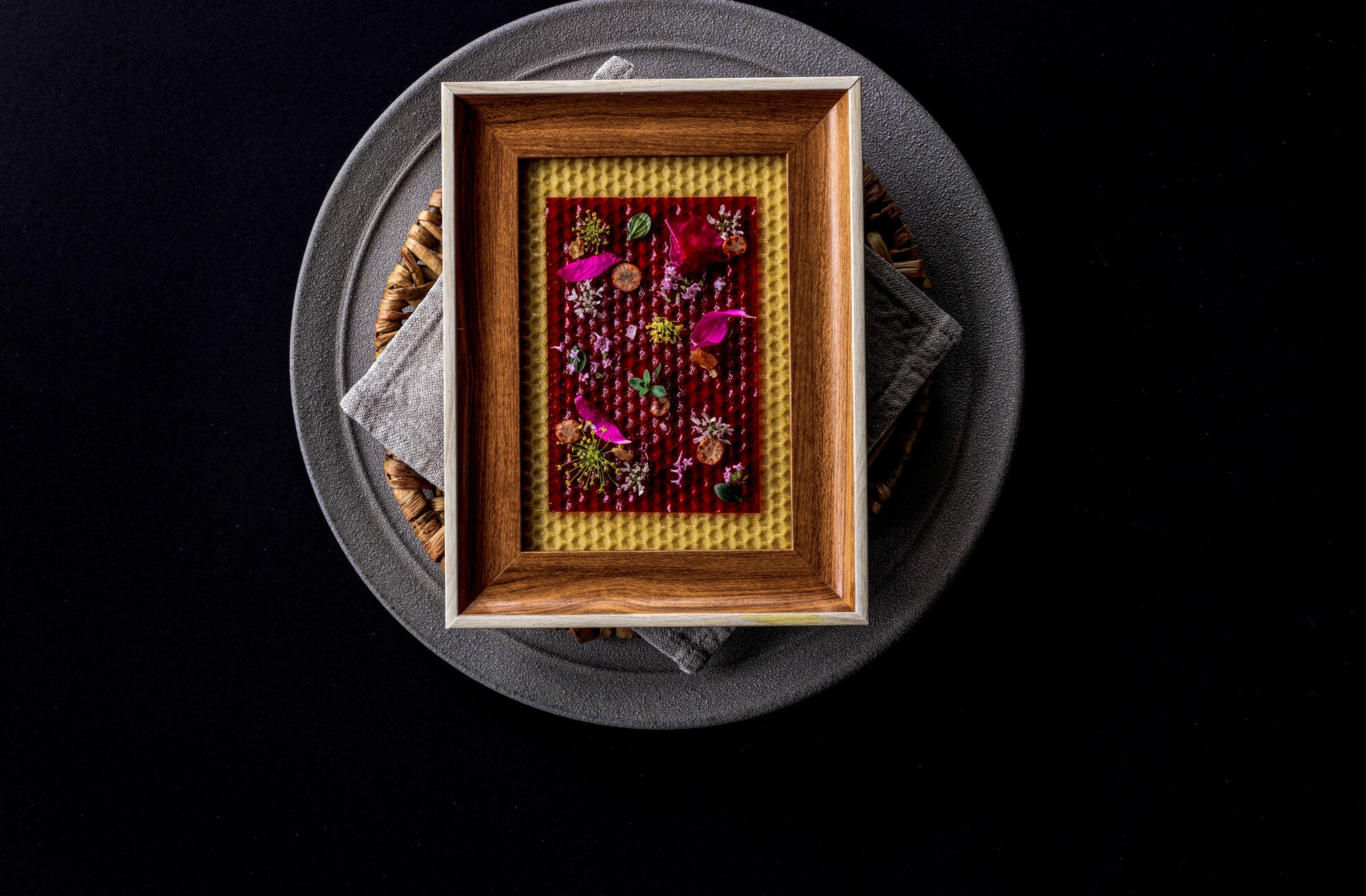







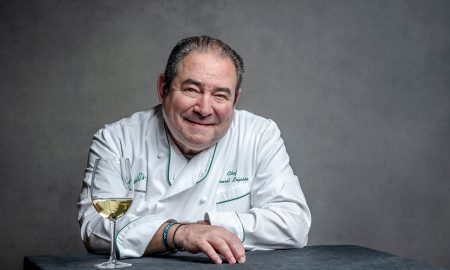
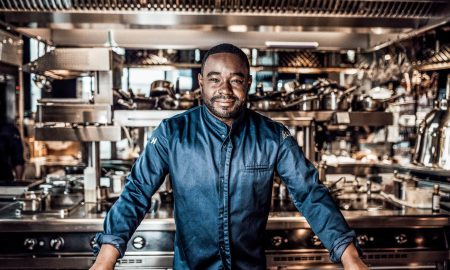
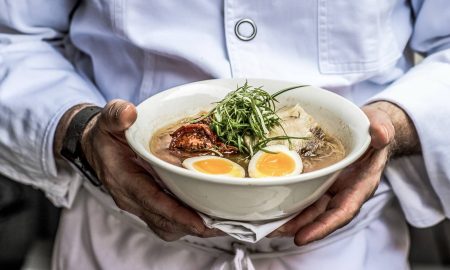
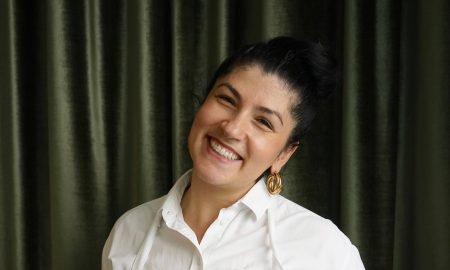
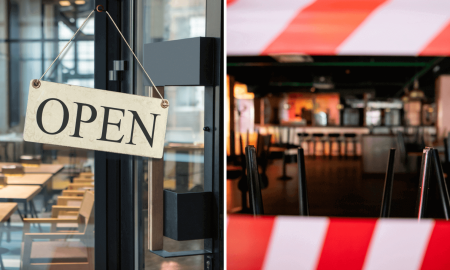
Pingback: Davide Caranchini: championing sustainability | KTCHNrebel